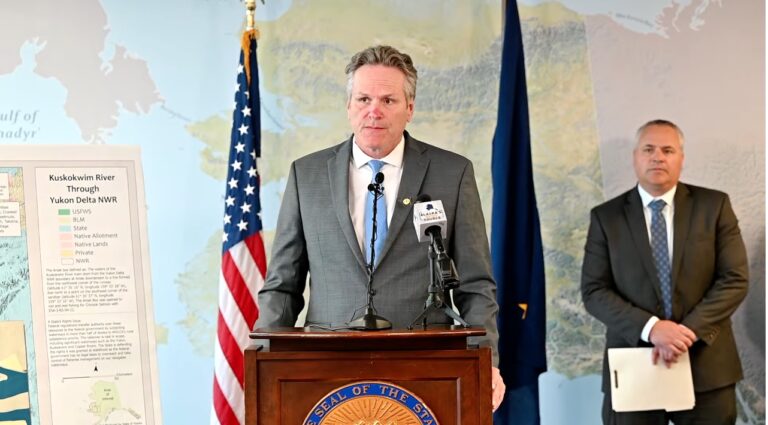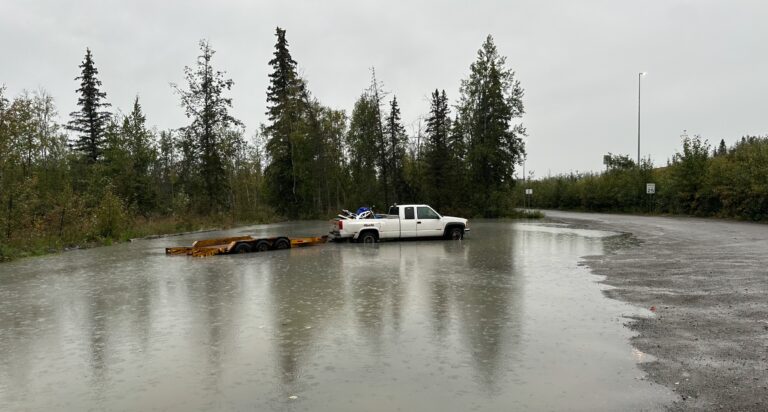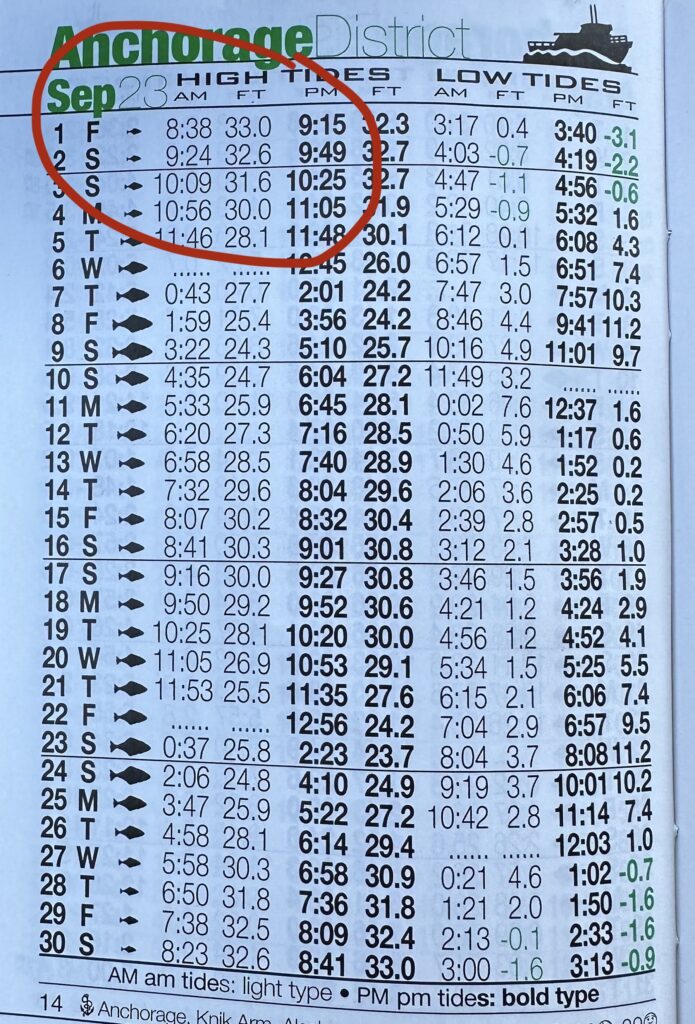Who manages the Kuskokwim River subsistence salmon fisheries?
Federal agencies? They think they do, because of something called the “reserved waters doctrine.” The State of Alaska? It believes it does, by authority of the Statehood Compact.
It’s going to have to be worked out in court. The federal government has already sued the State of Alaska over who controls salmon fishing decisions on the Kuskokwim River. That lawsuit is simmering on the back burner.
On Friday, Gov. Mike Dunleavy’s Administration filed a cross motion for summary judgment in federal district court to establish Alaska’s primacy in managing the river fisheries across the state.
“We didn’t choose this fight. The Feds foisted it on us,” Dunleavy said in a press conference on Friday.
The 702-mile Kuskokwim River subsistence salmon fishery is one of the biggest subsistence fisheries in the state, with more than 1,500 households currently fishing it.
In spite of the Statehood Compact giving Alaska the authority to manage its fishery resources on navigable waters, the federal government keeps seizing control, as the National Park Service did when it tried to take control of the Nation River, and lost in court in Sturgeon v. Frost.
For the past few years, the federal government has also encroached on state rights on the Kuskokwim, which empties into the ocean near Bethel. The Feds are trying to establish their primacy.
But these are rights granted to Alaska at Statehood, and Gov. Dunleavy isn’t going to kick the can down the road.
Currently, the management tug-of-war has the federal government stepping in whenever it believes the State of Alaska is not protecting rural users in the Lower Kuskokwim enough. The State, however, is required by its own constitution to also manage fisheries for future generations, as well as for all Alaskans, including those in the Upper Kuskokwim.
The federal open-shut orders often conflict with state orders, and at time leave few fish for the people of the upper Kuskokwim, north of Aniak and McGrath.
This whole “who manages” question is full of twists and turns, legal bunny trails, and a lot more nuance than can be netted fully in one news story. But referring back to the Sturgeon v. Frost lawsuit, it was established at the Supreme Court that navigable rivers are state owned and managed and are exempt under the Alaska National Interest Lands Conservation Act from federal regulatory authority.
The governor says that if Alaska doesn’t defend itself on the Kuskokwim, the federal government will move into controlling the Yukon River and the Copper River salmon fisheries, too, including the popular dip net, personal use fishery at Chitina.
There appear to be two main points to the Dunleavy Administration’s legal move:
First, the Administration is tiptoeing around the “Katie John” decision, which involves Alaska Native subsistence rights and the concept of “reserved waters doctrine.” Decades ago, the Ninth Circuit Court of Appeals issued a more narrow ruling than the lower court had determined regarding fish-wheel operator Katie John’s claim based on the “reserved waters doctrine.” Gov. Tony Knowles decided to not appeal on the state’s behalf in that Katie John decision of the 1990s.
In this case, the State is trying to not step into the Katie John mess, but it does own the submerged lands and it plans to ask the Supreme Court to determine if, under the Alaska National Interests Land Claims Act, there is a subsistence priority, and for who. Who has the ownership of the rivers in Alaska?
Second, the State is saying that the federal government, through the Department of Interior and the Department of Agriculture, defaulted the decision on fishery management to a federal subsistence board, which then defaulted the decision to professional federal staffer. Thus, decisions about federal management are being made by the administrative state.
The way that the State manages the resources is via the State Constitution, which includes all users. The federal government manages for just some users, and it’s not as simple as a race-based decision. There are tens of thousands of urban-based Alaska Natives who are cut out from traditional subsistence fishing by the Feds, because they have been displaced to Anchorage or Fairbanks for a variety of reasons.
As an example, First Lady Rose Dunleavy no longer lives in Noorvik, and so is prevented from participating in subsistence fishing near her hometown under the federal management rules.
“It has to do with sovereignty over our waters,” Dunleavy said. The state had to file today to meet the court deadline.
“This is a very important case for Alaska, it strikes at the heart of what in some cases why Alaska became a state. The ability to manage its own resources was a big part of that.”
The press release in its entirety from the Department of Law:
Today the State of Alaska filed a motion for summary judgment asking the U.S. District Court in Alaska to reject claims brought by the federal government that would strip Alaska of its right to manage fisheries on the Kuskokwim River.
The Biden Administration’s Department of Justice filed suit against the State of Alaska in May 2022 after two years of conflicting management emergency orders. The dispute focuses on implementation of subsistence priority for fishery management, and more specifically, the applicability of a priority for “rural” subsistence for fishery management on the Kuskokwim.
In 2021 and 2022, the Federal Subsistence Board, FSB, issued emergency special actions for the portion of the Kuskokwim River that is within the Yukon Delta National Wildlife Refuge. The Alaska Department of Fish and Game also issued emergency orders for the Kuskokwim River during that time frame. The orders from the Federal Subsistence Board and those from ADF&G conflicted. For example, one of the FSB’s orders purported to authorize limited subsistence fishing on the Kuskokwim only for rural residents, but ADF&G’s order opened the Kuskokwim to subsistence fishing for any Alaskan eligible for subsistence fishing. The full account of conflicting management can be found in a sworn declaration by Commissioner Vincent-Lang
The State argues that the federal government does not have the authority to manage the fishery on the Kuskokwim because the Kuskokwim River is not “public land” under the Alaska National Interest Lands Conservation Act. Furthermore, the appointments to the Federal Subsistence Board violate the Appointments Clause of the U.S. Constitution, and federal orders that violate the Appointments Clause have no effect.
The State’s defense is supported by the 2019 U.S. Supreme Court decision in Sturgeon v. Frost and is further supported by other recent SCOTUS decisions.
The State is defending the rights it was granted at statehood, and the federal government has no legal basis to overreach and take control of fisheries management on the lower stretch of the river to the detriment of the upper part of the river.
If the Biden DOJ is successful in its lawsuit, it will set precedent to cede management of Alaska fisheries to the federal government – reverting to a situation that was the primary motivating factor for Alaska statehood in the first place.
“If this federal overreach is allowed to stand, it opens the door to the State losing its right to manage Alaska fisheries on significant waterways beyond the Kuskokwim, including the Yukon and Copper Rivers,” said Governor Mike Dunleavy. “Not only was fisheries management a right granted at statehood, but sustainably managing our fisheries is a principle enshrined in the Alaska Constitution. The Biden Administration has been growing more and more aggressive in its efforts to take over State management of our resources, and we have essentially been backed into a corner. Alaska has no choice but to fight for its rights and its citizens.”
“For years, the State and federal government peacefully co-existed, with federal management relying on the State’s science and sustainability goals. But that ended when the federal government sued us over our actions taken to protect not only downriver subsistence fishermen but upriver as well,” said Alaska Attorney General Treg Taylor. “The federal government is doing everything it can to seize fish and game management authority that rightfully belongs to the State as the State tries to fulfill its constitutional mandate to manage these resources for all Alaskans, including former rural Alaskans who are not allowed to participate in the federal subsistence fisheries. Comprehensive management based in sound science to protect subsistence and future returns is what is needed, and that is exactly what the State provides. The federal government’s picking of winners and losers without regard to future returns is an assault on all Alaskans,” Attorney General Taylor said.
“Management of our natural resources was a primary driver in Alaska for statehood,” said Doug Vincent-Lang, Commissioner of the Alaska Department of Fish & Game. “Alaska’s right to manage our fishery resources was guaranteed under our Statehood Compact with the federal government and reaffirmed under ANILCA. Now the federal government is reneging on these agreements and replacing State management with federal management on State-owned waters. This is resulting in differential treatment of Alaskan citizens with some gaining priority access to resources while others who have cultural and traditional ties are excluded, based solely on where in our great state they live. This runs contrary to the Alaska Constitution, ANILCA, and more importantly, to how Alaskans treat Alaskans. Our defense stands up for all Alaskans. It is unfortunate that we have been put into a position by the federal government to defend our Constitution and our right to manage in the best interest of ALL Alaskans. In this time of fiscal uncertainty, money and resources could be better spent restoring depressed salmon runs,” Commissioner Vincent-Lang said.
Read the Kuskokwim FAQs here.
See the map of the region here.









